Latin name: Delphinium
Category: ranunculus annual and perennial herbaceous plants
Origin: Ancient Greece
Delphinium – a wonderful ornamental plant
The flowers are popular for their long and elegant blooms. Delphinium perennial grows to a height of more than two and a half meters, contains stems that are straight, hollow and fragile. The fast-growing plant can grow into a large flowering bush in just two months.
Delphiniums in a flower bed, in a garden, in a country house look impressive. They look beautiful due to their height, harmony and accuracy.
Delphiniums have spectacular blue, blue or purple flowers. Occasionally you can find species with flowers of white and pink hue. The diameter of the flowers is 3-7 cm, they can be simple, double and semi-double. Multi-flowered spicate inflorescences differ in height from 80 to 90 cm and even more. Delphinium flowering time in June for a month.
Flowers similar to the delphinium: aconite, foxglove, lakonos.
Perennial delphiniums are not difficult to grow. Plants are frost-resistant and drought-resistant, wintering in open ground conditions. They create a surprisingly charming view of the landscape, enclosing unsightly buildings with picturesque beauty. Flowers cut for bouquets do not fade for a long time.
Delphinium perennial should be planted in the background on the plots. Suitable plant neighbors are lilies, phloxes, cereals, daylilies.
Annual delphiniums are most preferable to be planted in flowerbeds along with bluebells, cornflowers, pyrethrums.
The delphinium flower is a symbol for success, the joy of life, is a talisman for those born in July, for new beginnings and the use of a happy chance, endowed with protection from negative energy.
It should be borne in mind that the delphinium is poisonous, so gloves should be used when working with it. It is not recommended that flowers grow in the area where there is an apiary, because the honey will be of poor quality.
The herb larkspur (comfrey) contains healing properties, is anti-inflammatory and analgesic. Grass is used to make a large number of medicines. Comfrey root has a regenerating and bactericidal and wound healing effect. It is used in case of fractures, dislocations, sciatica, bone tuberculosis, as well as in the treatment of bone cancer. Larkspur is widely used for any bone pathologies.
Types of delphinium
There are more than four hundred varieties and species of various heights from tall to short plants. It contains distinctive features in the form and size of foliage, shades of inflorescences and size of flowers, time of formation and methods of cultivation. The most popular annual delphiniums:
Dephinium ajax (Delphinium ajacis)
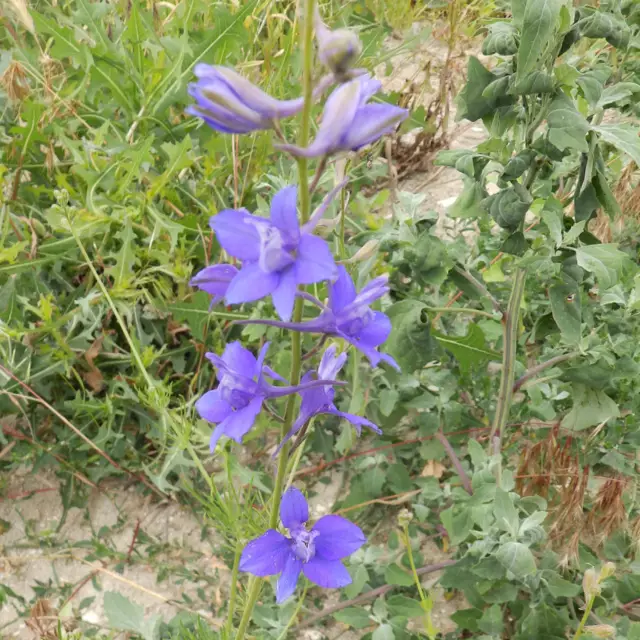 Plants grow in height in the range of 40-100 cm. Spike-shaped inflorescences grow with a maximum size of 30 cm. Flowers come in red, pink, white, purple, blue, blue hues. There is a variety with densely double flowers. There is a low-growing variety of dwarf hyacinth whose bush height is about 30 cm, grows with double flowers of various shades. This variety blooms from July until the first frost.
Plants grow in height in the range of 40-100 cm. Spike-shaped inflorescences grow with a maximum size of 30 cm. Flowers come in red, pink, white, purple, blue, blue hues. There is a variety with densely double flowers. There is a low-growing variety of dwarf hyacinth whose bush height is about 30 cm, grows with double flowers of various shades. This variety blooms from July until the first frost.
Delphinium field (Delphinium Consolida)
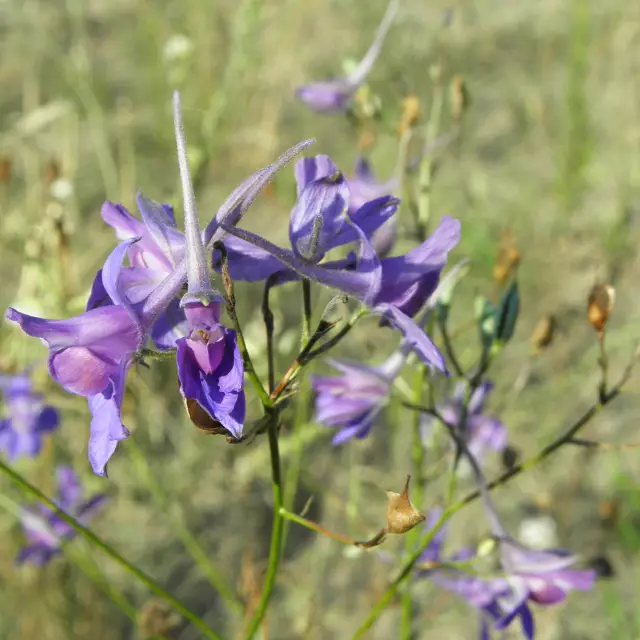 Flowers stand out up to two meters high. Terry or simple flowers of blue, pink, lilac, white.
Flowers stand out up to two meters high. Terry or simple flowers of blue, pink, lilac, white.
The most beautiful varieties frosty sky – blue flowers in the central part of the white. Low rose – pink-hued flowers. Dark blue – the plant has dark blue flowers. Flowering time from the first summer days and ends in the autumn.
Delphinium New Zealand
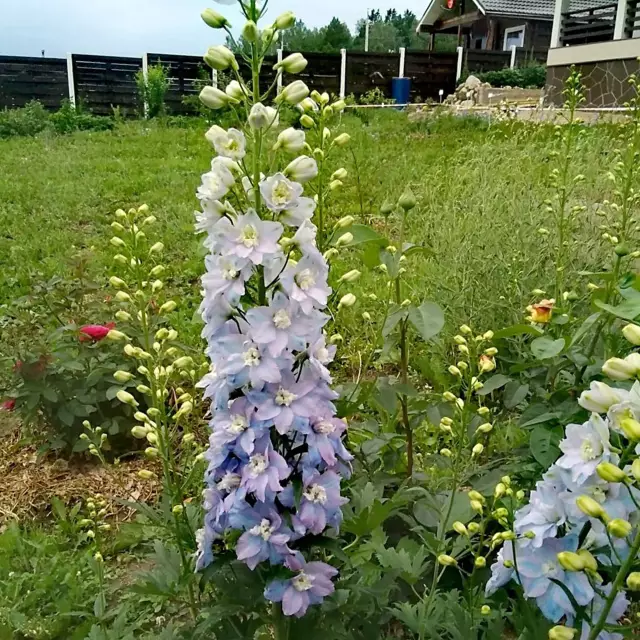 High decorative qualities and unpretentious, winter-hardy and durable varieties have become popular among flower lovers. The flowers are taller than two meters, the peduncles are strong, but require support. Large purple flowers with a white center gather in dense inflorescences. The plant blooms for the first time in the second year of growth in the period June-July.
High decorative qualities and unpretentious, winter-hardy and durable varieties have become popular among flower lovers. The flowers are taller than two meters, the peduncles are strong, but require support. Large purple flowers with a white center gather in dense inflorescences. The plant blooms for the first time in the second year of growth in the period June-July.
Of the perennials, the most popular:
Delphinium Leroy – the flower stands out with a green tint from a sweetish smell.
Delphinium Astolat – distinguished by pink flowers. Contains large double or semi-double flowers.
Terry delphinium – flowers of black, red, yellow color. The flowering period is late spring and ends at the end of summer.
Kashmir delphinium – stands out with purple flowers in the center of the black core.
Delphinium King Arthur – blue flowers with a white center.
Lipicolor delphinium – stands out with blue-green and dove-gray petals.
Delphinium Bruno – differs in blue-violet petals.
Delphinium golostebelnoy – has flowers of a red-orange hue. Reaches a height of no more than a meter. Heat-loving, it is most favorable for a flower to grow in winter in a flowerpot at home in warm conditions.
Planting and growing delphinium
The plant is sun-loving, however, with active solar radiation in dry weather, the sun's rays damage flowers and leaves. For this reason, it is recommended to grow flowers in places where there is shade.
Slightly acidic and neutral soil is most favorable for the delphinium. It will be ideal for the growth of flowers – the choice of loose loam with the addition of organic fertilizer. It is recommended to fertilize the earth with potassium salt, ammonium sulfate, superphosphate, which contribute to the good growth of flowers.
Delphinium Care
In the second year, the plant produces a large number of young sprouts, thinning should be done. Because the sprouts harm the root system, and also due to thinning, the flowers will be large, beautiful.
It is necessary to stick sticks near the bushes of the plant and tie up the stems, so that the strong wind will not break the inflorescences.
Mineral fertilizers with superphosphate, ammonium nitrate, potassium chloride and ammonium sulfate should be applied during the warm season. In the summer, it is necessary to water the plant without excess. For winter, we cut the stems near the root, leaving small stumps. The duration of the growth of a perennial delphinium in one place is no more than ten years.
Delphinium breeding methods
The culture is propagated by dividing the bush, cutting off the cuttings and using seeds.
Reproduction by dividing the bush can be done when the plant reaches the age of three in early spring before active growth. We remove the earth from the root and plant it in a flowerpot in a soil mixture containing fertile soil, sand and humus in equal proportions. After three weeks, the delphinium is transplanted into open ground.
With the help of cuttings, reproduction is done in the spring when shoots appear. Shoots are cut to a length of more than 10 cm and leave a small piece of the root. When planting a plant, the root will make it possible to adapt more favorably to new growth conditions in open ground. It is also possible to plant first in a box and later transplant into open soil.
Propagating the plant with seeds should be collected, the seeds in autumn and winter should be kept in a cold place, such as a refrigerator. When March comes, sow in boxes in a mixture of earth, sand and humus, taken in equal parts. After a month, seedlings can be transplanted into open ground.
Most often, the seeds should be kept in a warm place for three days, seven days in a cold place, and then again moved to a warm place, after which the seeds begin to germinate. In rare cases, it is necessary to move the seed containers many times from a warm to a cold place and back.
Location selection
The culture is suitable for the location of growth in well-lit and protected from strong winds, shaded from sunlight during intense heat.
The soil
The soil is recommended sandy or loamy rich in organic matter. Add lime to acidic soil.
Watering
Delphinium tolerates moderate humidity better, because dampness contributes to delicacy and illness, so we do not water it excessively.
Bloom
Delphinium blooms in June, blooming of flowers is gradual at first from below. There are about 15-80 flowers on a plant, inflorescences are up to one meter long, the height of the delphinium is from 40 cm to two meters or more.
Many are interested in the question of when the delphinium blooms after sowing. Flowering time of perennial delphiniums in the second year after planting with chic peduncles. In the first year of plant growth, buds should be plucked.
Also, let's look at this question why the plant disappears. Influence on the disappearance of delphiniums is the defeat of viral, bacterial, fungal diseases. Mostly diseases appear under bad weather conditions. Plants with weak development are most affected if agrotechnical rules are not followed.
Delphinium diseases
When affected by fungal or bacterial diseases, plants should be sprayed with special preparations. Plants that have become ill with viral diseases must be removed, planted in the same place after five or six years.
Delphinium pests consist of onion flies, aphids, slugs, caterpillars, delphinium flies and mites, and nematodes also infect the root system.
The delphinium fly is destroyed with a solution of 10% promethrin. It is possible to get rid of aphids by making a soap or tobacco solution, if folk methods are powerless, use insecticides. When attacked by mites, foliage and flowers curl and turn black. It is necessary to collect the damaged parts and treat with appropriate preparations. To combat slugs, you need to spread the superphosphate preparation on the flower bed or sprinkle the ground with lime. Slugs must be manually removed from plants.
Nematodes are a major threat to plants. Pests harm the roots, the plant dies. Prevention from a pest – before planting flowers, when digging the earth, add thiazon 50 grams per square meter.
Difficult moments when growing a delphinium:
- Foliage turns yellow or turns brown – the soil is very light and it dries out quickly.
- Inflorescences lose bright color – being in direct sunlight.
- Poor flowering and small flowers – growing in shady places, not enough sun.
- The lower foliage turns yellow – an excessive amount of moisture, the shoot rots.
Subject to the correct growing conditions, the delphinium will delight you with its beautiful appearance, decorating garden plots and flower beds. Good luck growing!




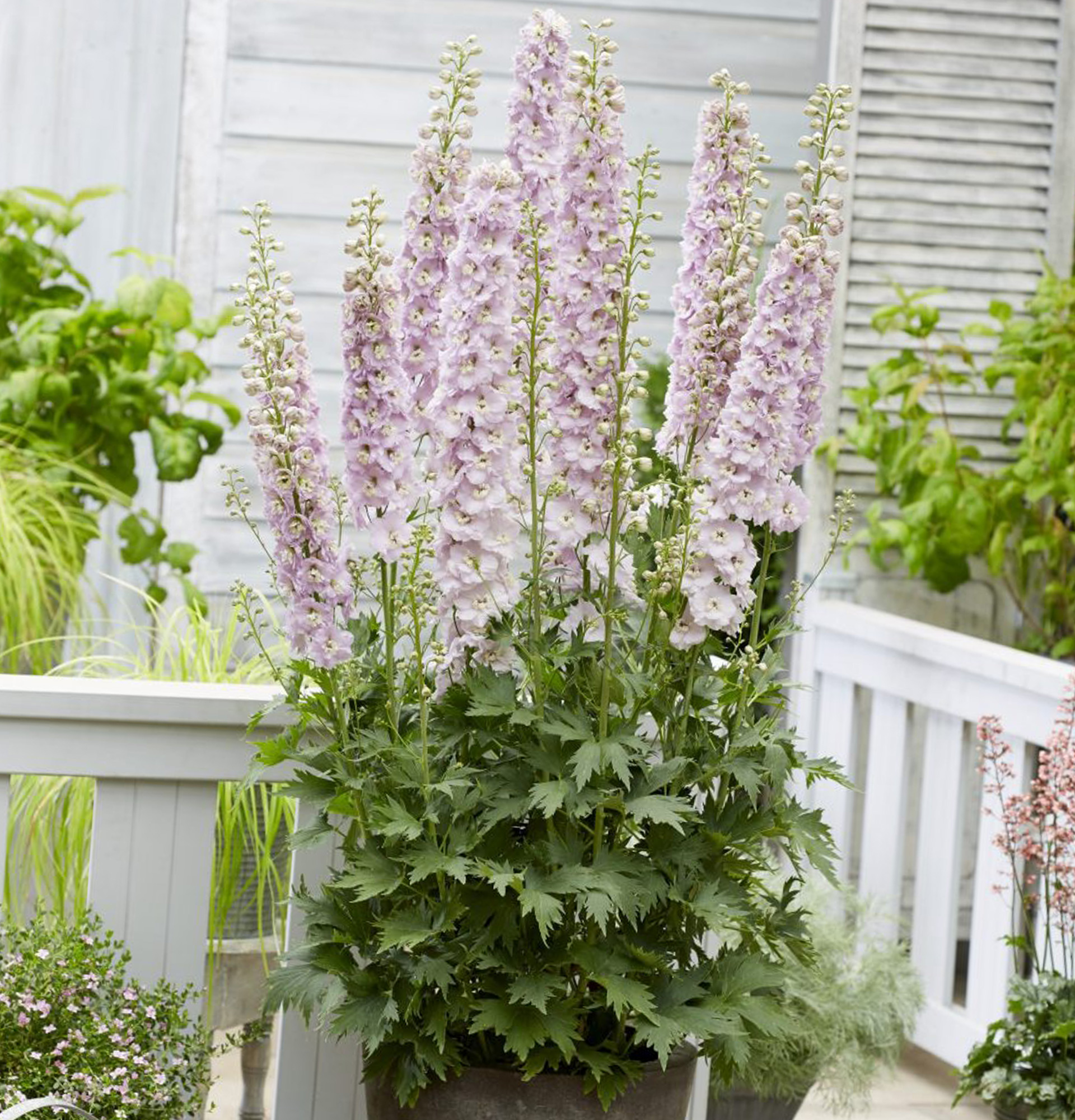











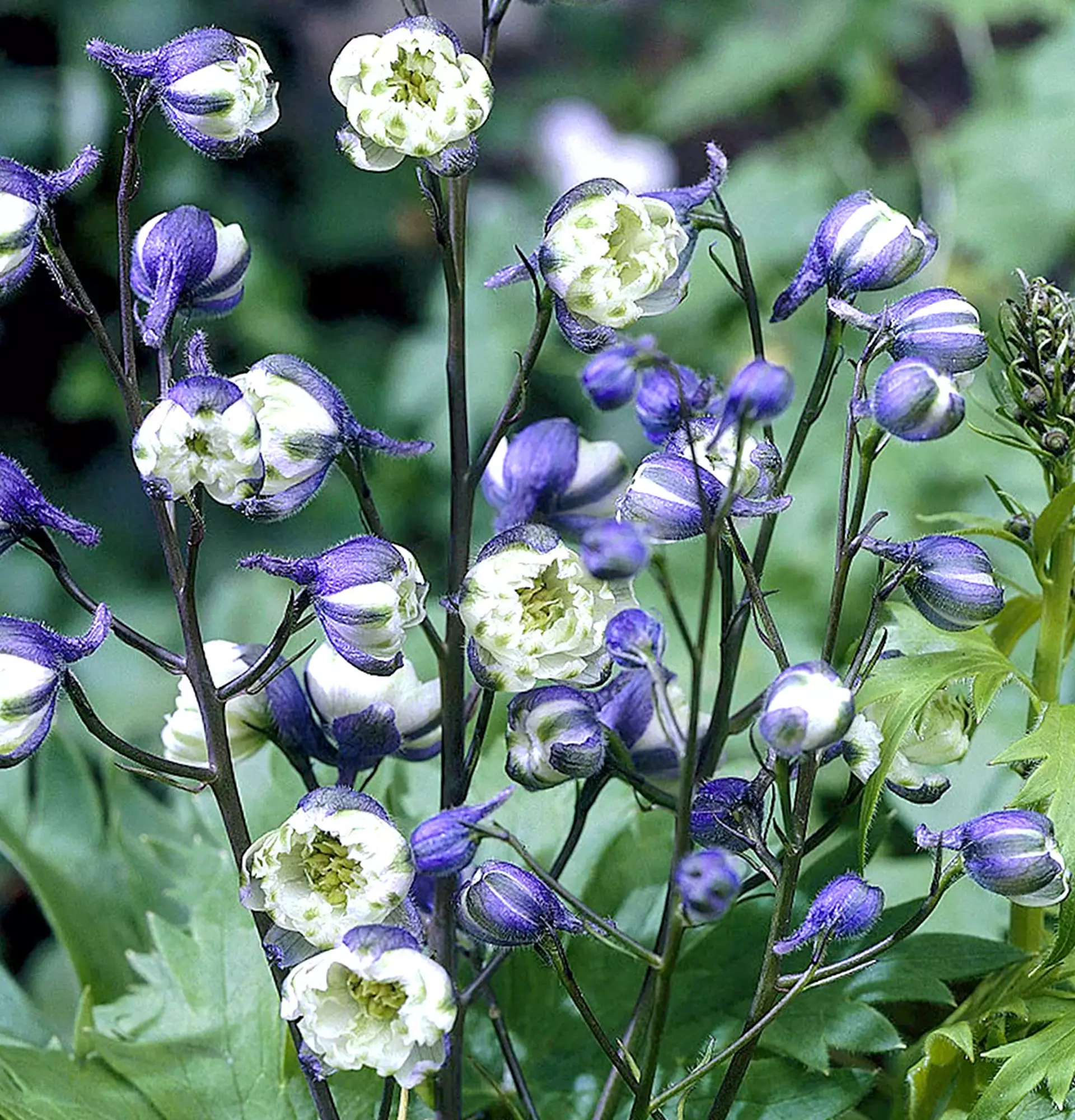
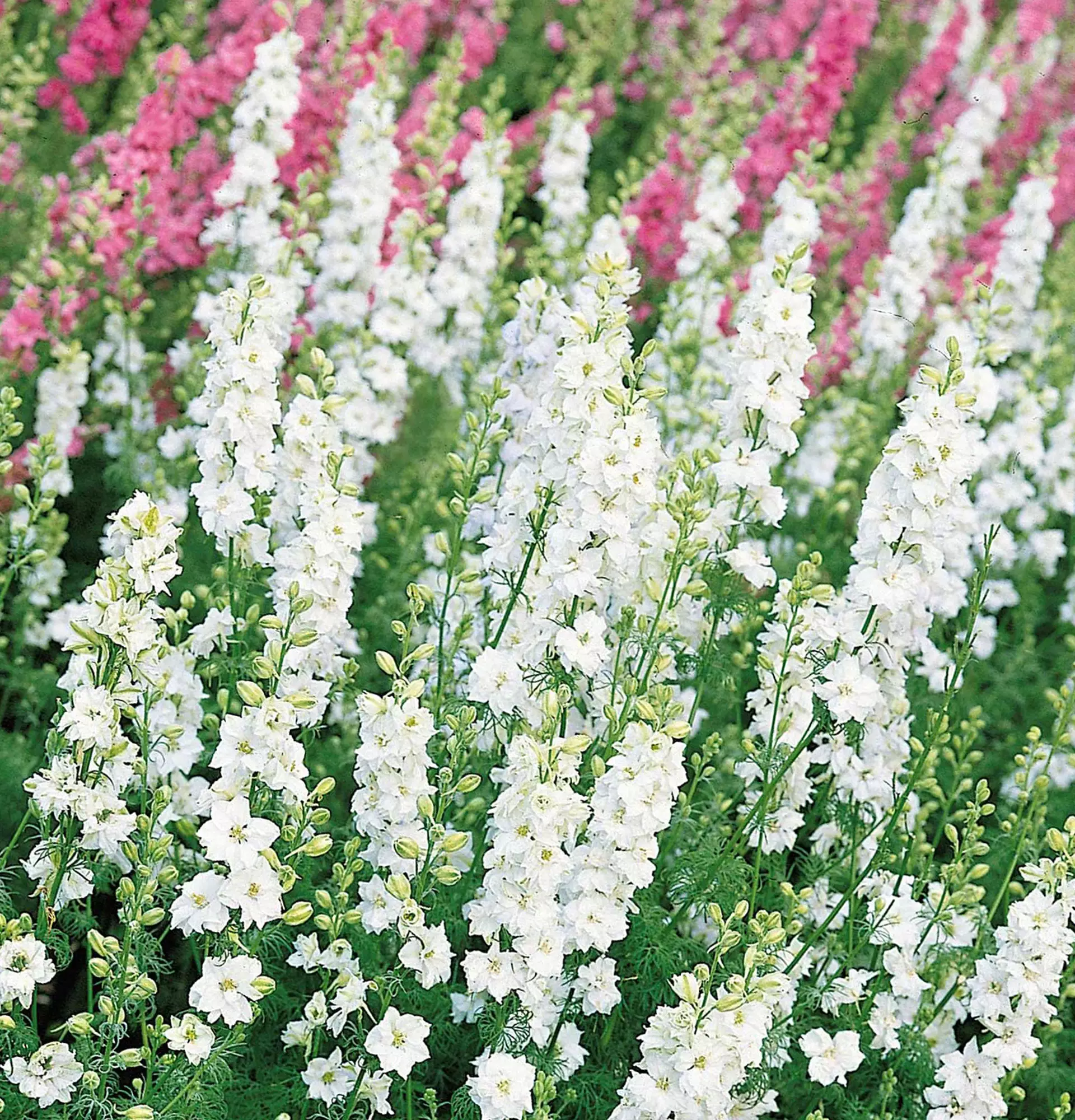
Write comments
Comments